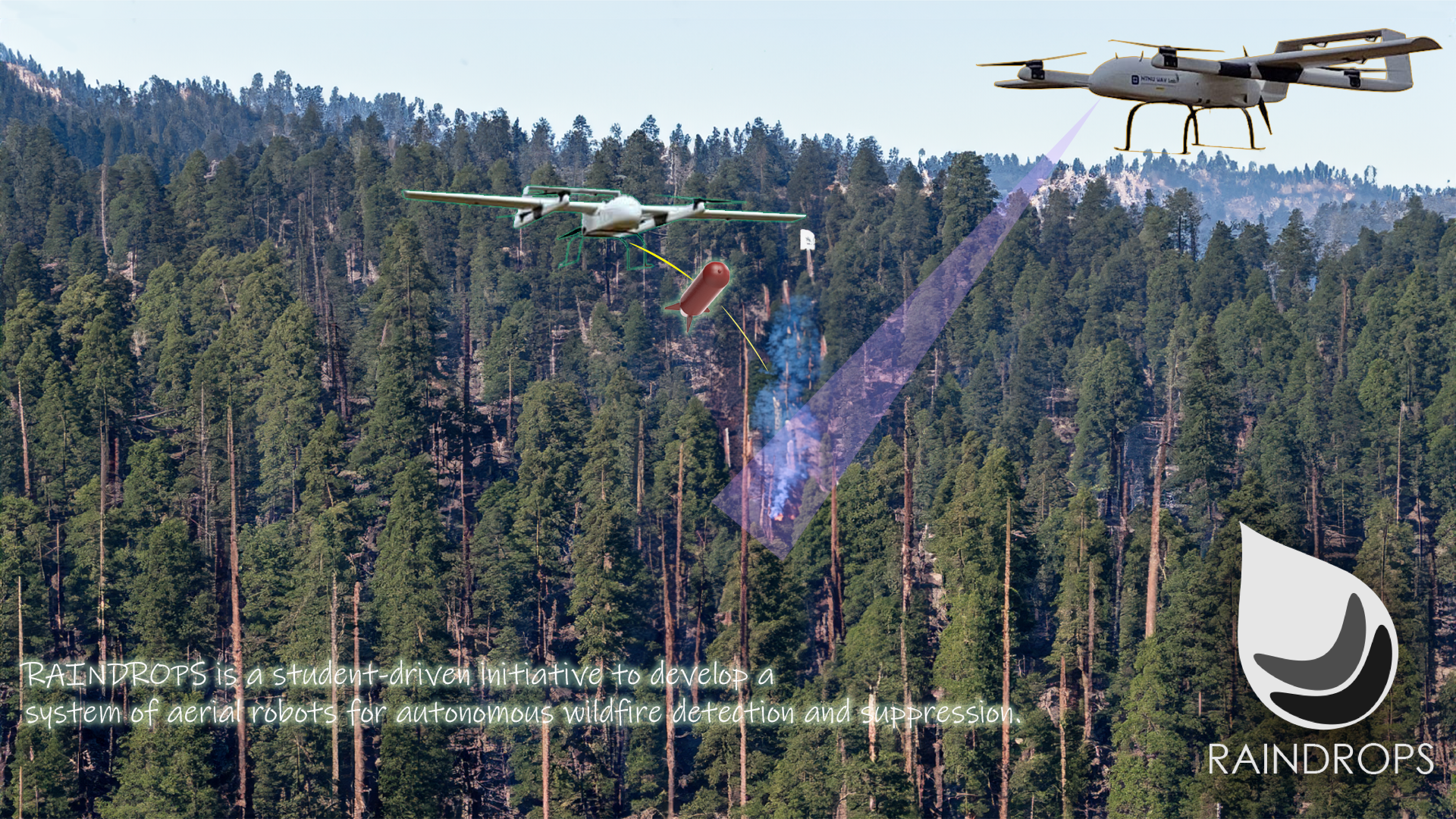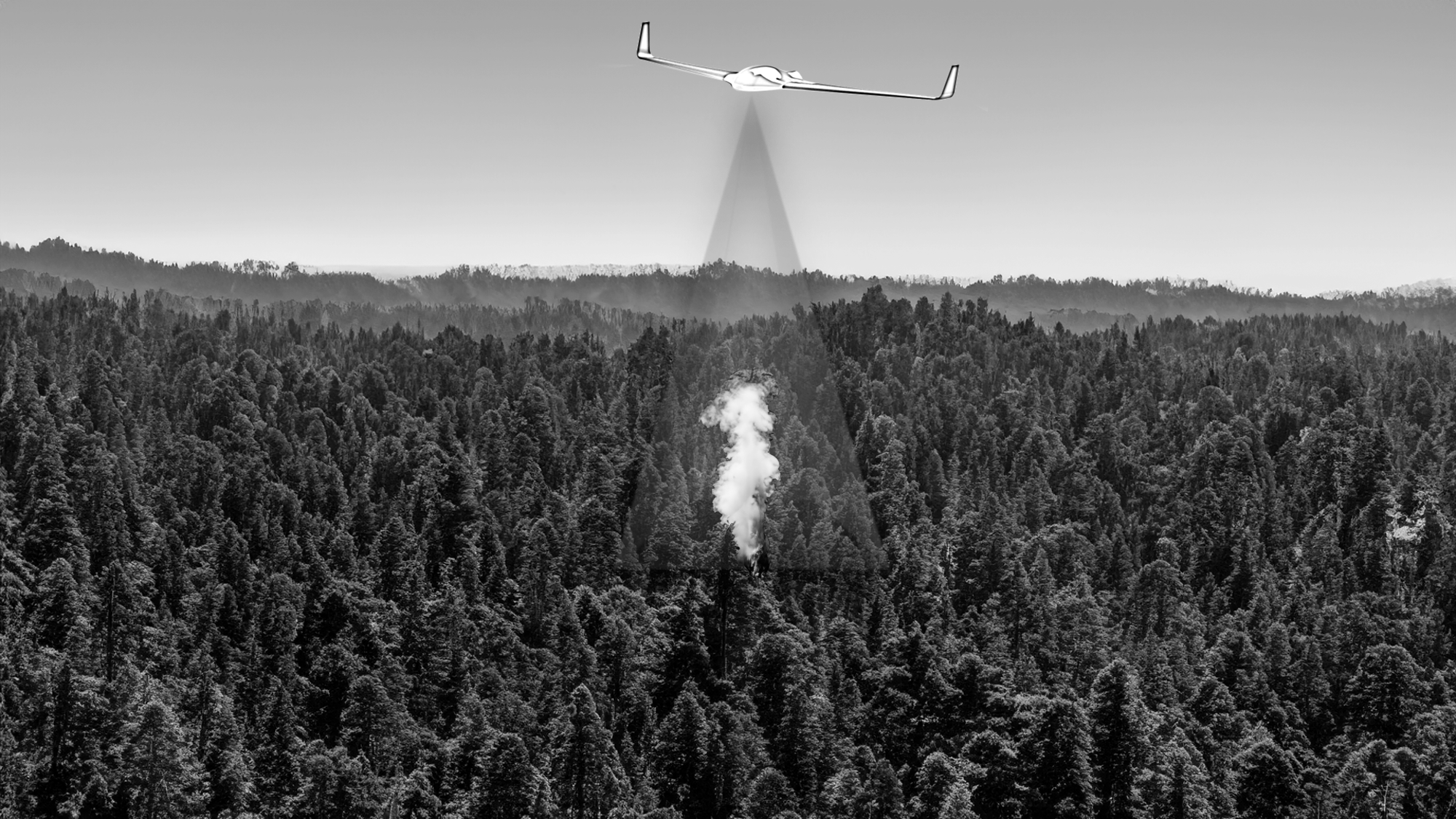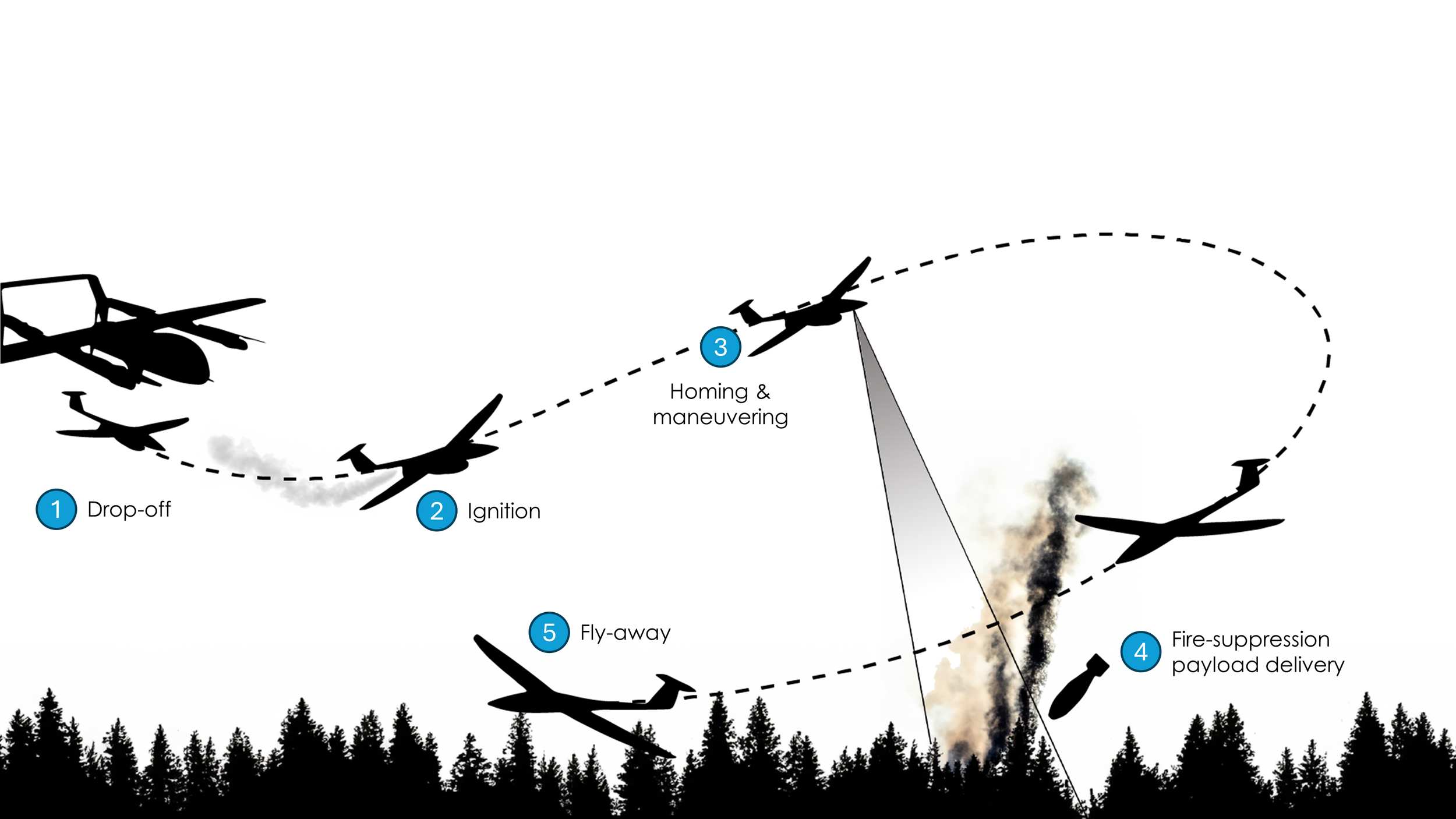RAINDROPS: Robotic Aerial InterveNtion for wilDfiRe Observation and suPpreSsion

Who we are
RAINDROPS is a student-driven collaboration between University College London (UCL, UK), the Norwegian University of Science and Technology (NTNU, Norway), and Brigham Young University (BYU, USA). RAINDROPS seeks to investigate the potential of utilizing a team of uncrewed aerial systems (UAS) that features the low costs and scalability necessary to facilitate incipient-stage wildfire detection and suppression over large areas with rapid response times.
Our mission
The envisioned solution combines two classes of systems, namely those tasked with observation and fire detection (“Observation UAS”) and those tasked with fire suppression (“Fire-suppression UAS”). The first set of robots emphasizes long-endurance and exploits a multi-modal sensing payload, sensor fusion algorithms, and deep learning to detect and localize incip-ient-stage wildfires rapidly. The platforms will implement meteorologically-informed path planning and multi-agent teaming such that the fire search and detection process is autonomous. The UAS tasked with fire suppression integrate a specialized payload that is released and dropped on an identified fire location to suppress it. With the location of an incipient-stage wildfire detected by the Observation UAS and communicated to the team, Fire-suppression UAS are tasked to rapidly fly towards the area of interest to deliver their suppression payloads. The complete system-of-systems emphasizes autonomous operation and scalability of costs to facilitate adoption.
Key persons
- Prof. Kostas Alexis (NTNU) website
- Prof. Tor Arne Johansen (NTNU) website
- Prof. Randy Beard (BYU)website
- Prof. Tim McLain (BYU)website
- Prof. Dimitrios Kanoulas (UCL) website

Fire-Observation Aerial Robots
The Fire-observation aerial robots of RAINDROPS integrate a multi-modal sensing payload tasked with the goal of detecting and localizing incipient-stage wildfires from high-altitude. The system relies on deep learning applied across sensor signatures and a custom actuated perception solution to increase area coverage. The fire-observation aerial robots of RAINDROPS shall operate in a team of systems with multiple such units operating simultaneously in order to cover a 1,000km2 area rapidly.

Fire-suppression Aerial Robots
The Fire-suppression aerial robots of RAINDROPS ferry a glider vehicle that is released [(1) “Drop-off”], ignites its solid-state engine [(2) “Ignition”, optional step that may not be integrated on the final prototype] and autonomously homes to the exact location of the fire [(3) “Homing & maneuvering”]. At this point, it releases the suppression material—in a specialized droppable container—such that it penetrates through dense forest canopy and gets released at the exact fire location. The fire-suppressing glider aircraft also operates autonomously while retaining connectivity with the ferrying robot to get up-to-date information about the fire [(4) “Fire-suppression payload delivery”]. The glider autonomously flies away from the fire [(5) “Fly-away”] in order not to contribute flammable materials to the fire. Its small battery, responsible only for avionics and low-power servo mechanisms (no motors) shall be enclosed on a specialized fire-safe container.
